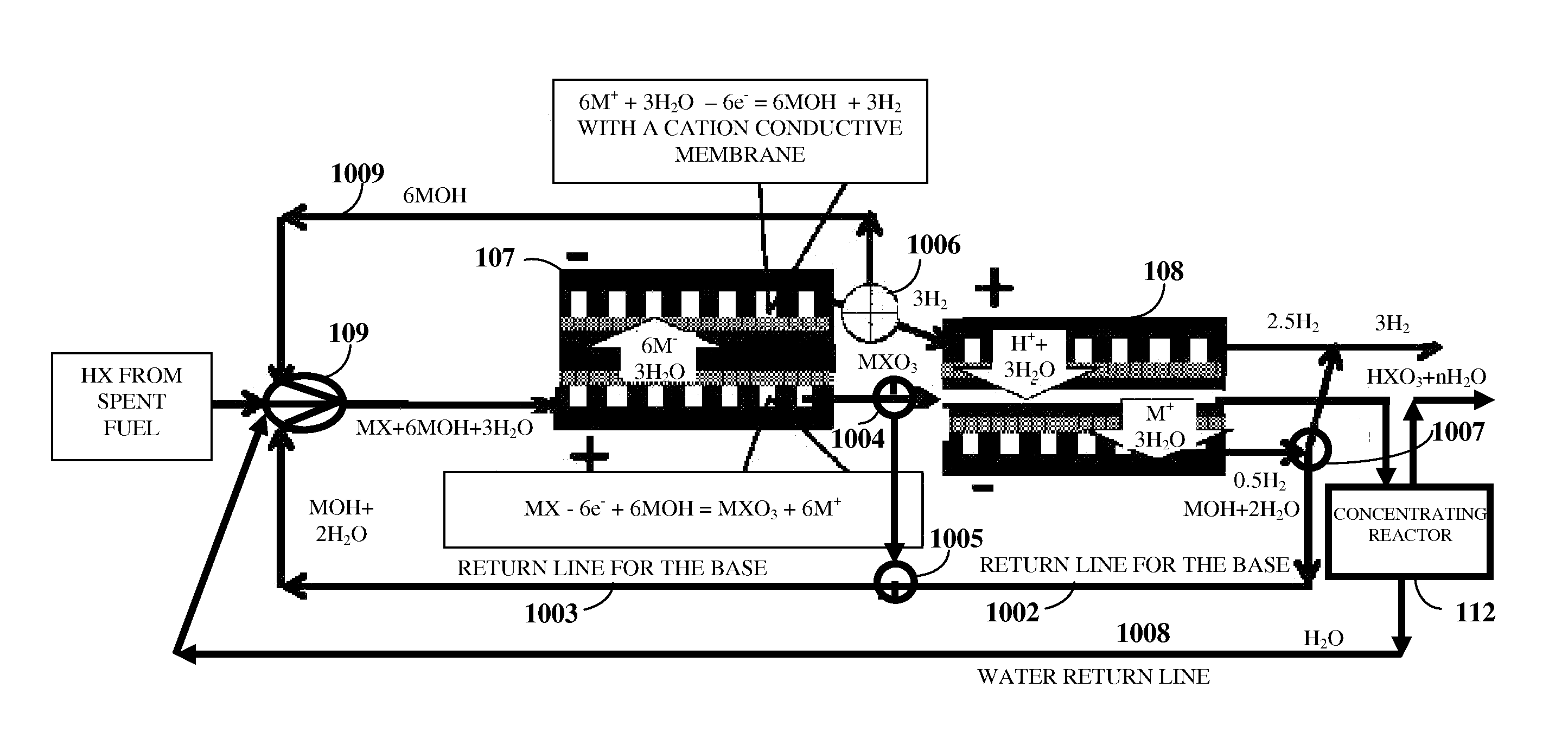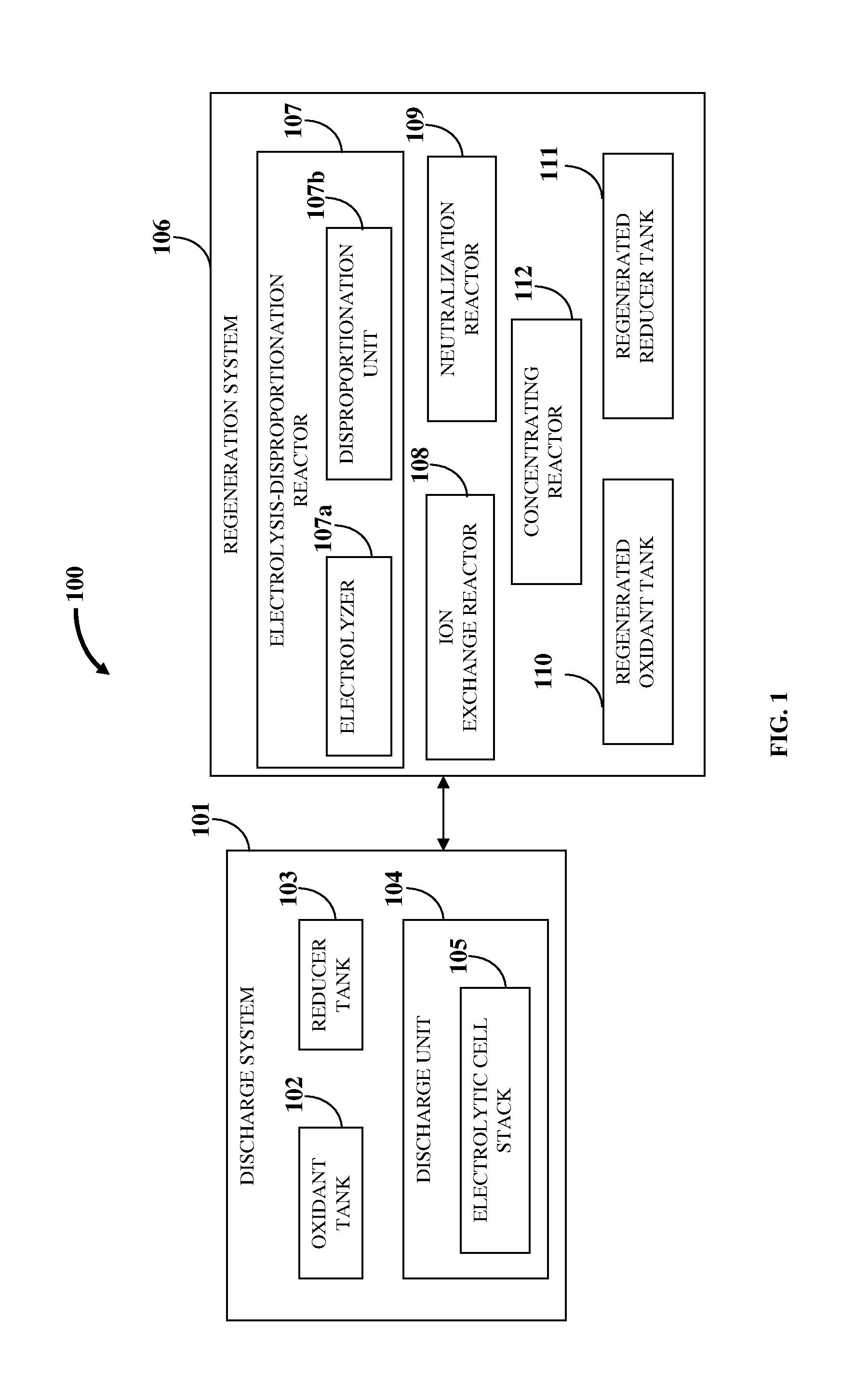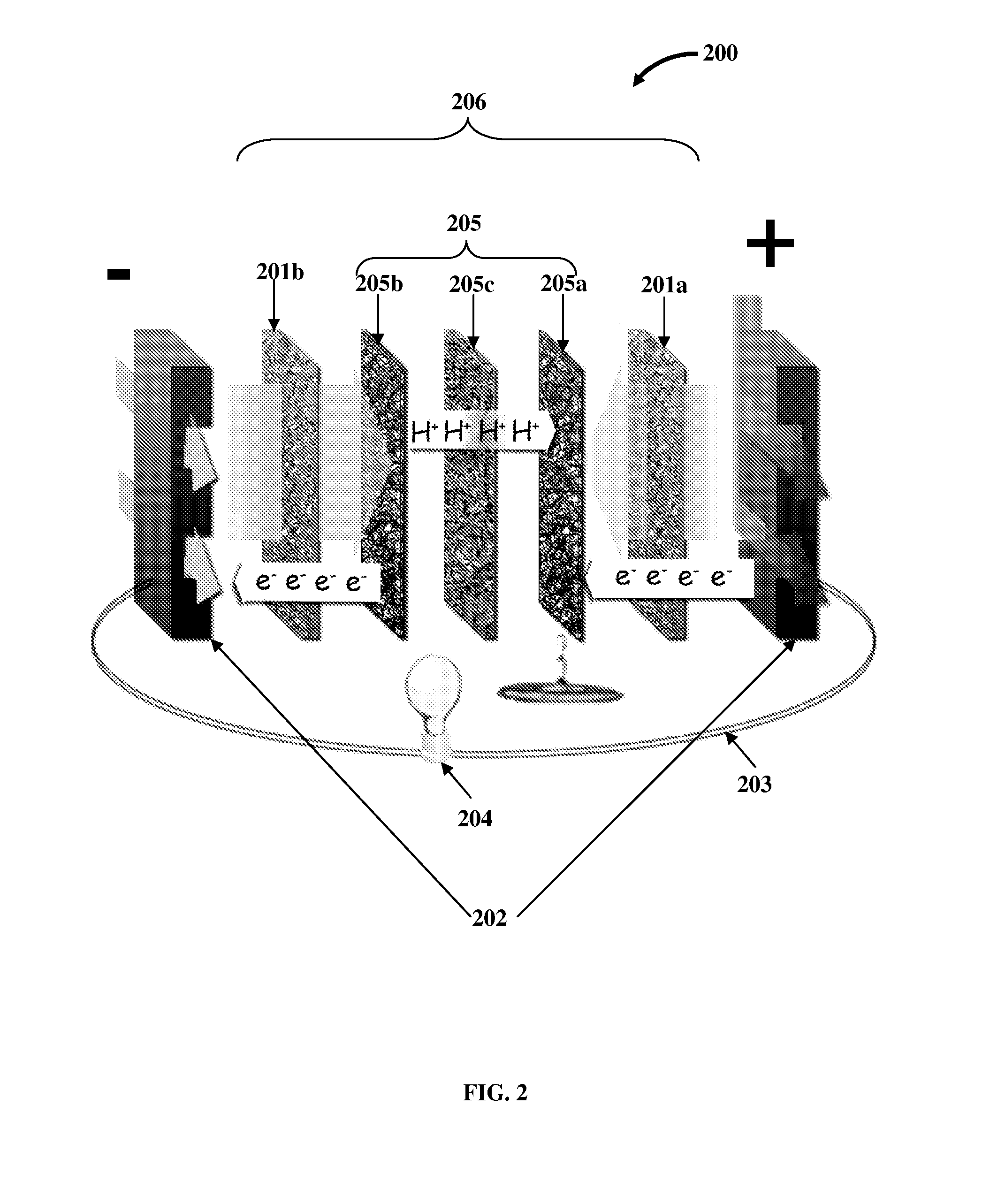Flow Battery And Regeneration System
a flow battery and regeneration system technology, applied in the field of flow batteries and regeneration systems, can solve the problems of increasing the cost of pemfcs, low energy content of lead acid batteries, and the success of electric vehicles
- Summary
- Abstract
- Description
- Claims
- Application Information
AI Technical Summary
Benefits of technology
Problems solved by technology
Method used
Image
Examples
example 1
[0165]FIGS. 14A-14G exemplarily illustrate graphical representations showing a comparison of three on-board power sources at a nominal power of 130 kW: a gasoline-internal combustion engine, a lithium ion battery (LIB), and an H2-aqueous multi-electron oxidant (AMO) discharge unit 104 or flow battery exemplarily illustrated in FIG. 1, as well as the Advanced Research Projects Agency-Energy (ARPA-E) targets. The AMO is 50% w / w aqueous HBrO3. The Toyota RAV4® EV of Toyota Jidosha Kabushiki Kaisha TA Toyota Motor Corporation is chosen as an example of a sport utility vehicle to illustrate the capabilities of the discharge unit 104. A sport utility vehicle (SUV) is selected because it is a large vehicle that presents a greater challenge for electrification than a small urban vehicle. The data are available for Toyota RAV4® in both gasoline and electric vehicle lithium ion battery (LIB) versions. All calculations are based on the rated power of about 130 kW=174 hp. The size of the storag...
example 2
[0169]The comparison of a gasoline engine, a lithium ion battery, and two hydrogen-bromate batteries with different methods of hydrogen storage, that is, 700 bar compressed and 9% w / w metal hydride is provided in the table below.
H2 storage50% AMO350 barliquid5% MH5.74Mtheoretical limitg / L25701251.48sol.Density100 kg, 300 kW realg / L102620systemstheoretical limitAh / L6701,8753,350923solutioncharge per mass ofAh / kg26,80026,78626800623.7solutionpure H2real systemw %555real systemAh / kg1,3401,3401,340623.7real systemAh / L268697536923AMOsol.vol. % for storageH277.4557.063.3systemwt. % for storageH22.2772.282.27systemvolume / chargemL / Ah3.731.441.871.08mass / chargeg / Ah0.03730.03730.03731.604 h drive RAV4 = 520 kWhkg3883883888342.3564 h drive RAV4 = 520 kWhL1,940746970563system energy densityWh / L208397339specific energyWh / kg4264264265% w / w H2
[0170]The parameters used for lithium ion batteries (LIBs) are 230 Wh / L, 128 Wh / kg, and $0.47 / Wh. The parameters used for H2 storage are 50 g / L compressed 12...
example 3
[0171]Reactions of a bromine electrode discharge using a vanadium redox mediator in the first step and an electrode reaction in the second step are provided below:
HBrO3+5V+3+5H+=½Br2+5V+4+3H2O;
5V+4+1e−=5V+3;
½Br2+1e−=Br−.
PUM
 Login to View More
Login to View More Abstract
Description
Claims
Application Information
 Login to View More
Login to View More - R&D
- Intellectual Property
- Life Sciences
- Materials
- Tech Scout
- Unparalleled Data Quality
- Higher Quality Content
- 60% Fewer Hallucinations
Browse by: Latest US Patents, China's latest patents, Technical Efficacy Thesaurus, Application Domain, Technology Topic, Popular Technical Reports.
© 2025 PatSnap. All rights reserved.Legal|Privacy policy|Modern Slavery Act Transparency Statement|Sitemap|About US| Contact US: help@patsnap.com



